Gods in Exile
Let us not pass away from light to exile. Scatter, that we may live, the men who hate us. Rig Veda
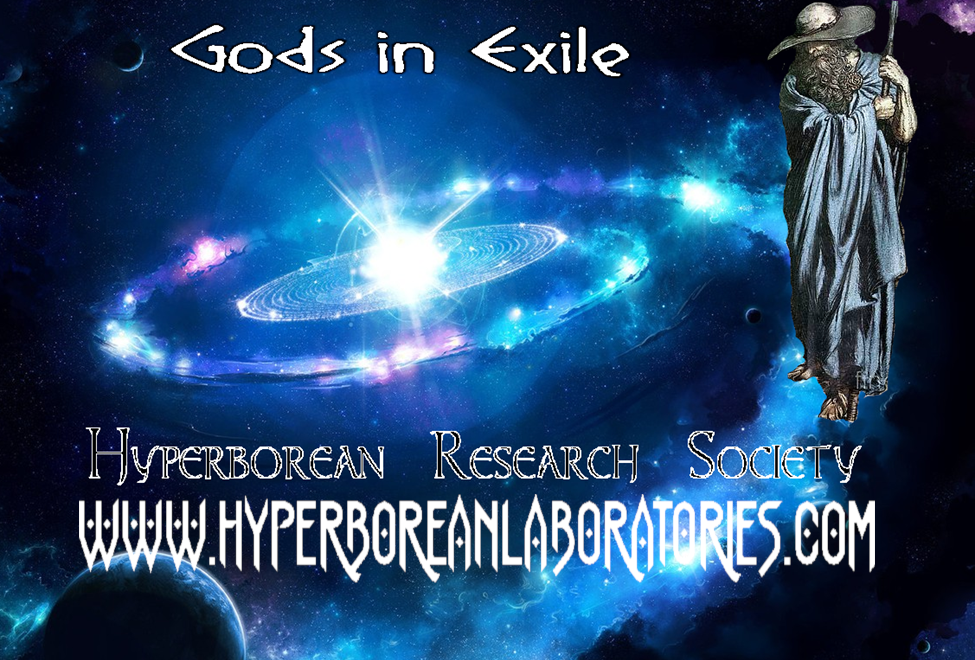
Gods In Exile
portions of this article have been extracted and expanded from the Magus Publishing monograph Bǫlverkr V.1.
We must begin with the premise that these topics are of sacred Mysteries, secret doctrines, the essence of the initiatory traditions that retained a cohesive narrative across an astounding amount of time and space. To piece together the fragments and the scattered pieces is to see a broader Master Narrative of the Indo-Aryan spiritual understanding of reality and life’s purpose. These are concepts of an exile from “source,” from the celestial and earthly homeland, as part punishment, part lesson, and initiatory experience. We have made the arguments for the survival of Orphic Traditions within the Norse mythology in many monographs (Magus series, Mystae, especially Orpheus V.2), examining the lore and mythos and scholarly debates of Odin’s origins as a “Scythian.” All of these are heritage cultures to much greater legacy cultures that received initiatic lore and sacraments from a central source. The intermediary cultures, such as the Scythians, spread a specific doctrine of the immortal soul and pathways to divinity, of visionary herbs and elixirs, alchemy, a spiritual cosmology that proceeded along a Sacred Way and supplied mystery and sacred temples/communities from India to Ireland (Indo-European). The disruption and eradication of this sacred knowledge is a profound exile and amnesia of the past and an even greater banishment from the presence of the Gods.
So many contradictions, so many enduring puzzles and incongruities of the lore and mythos are reconciled when the Master Narrative of ‘Gods in exile” (or Buddhas, Daemons, souls, demigods, Philosophers, etc.) is fully integrated into one’s understanding. The earthly incarnations, the purifications, the trials and wars, the human guise of wanderer, the torturous ordeals, the erotic conquests, the singular pursuit of magical plants, meads, herbs, the enslavement of Gods, the incarnations as kings, seers, the divergent timelines or conflicting accounts must all be seen as the God’s pursuit of the divine Memory to recall and liberate from banishment of the company of the Blessed. Different traditions hold these essentials at their core, and these are embellished with cultural or theological notions, or philosophical worldviews that can tend to one extreme or another. Thus, we are dealing with philosopher-shamans who had their own cultic interpretations of a central doctrine, the interpretation of which was not subjected to dogma. Then there are other factors, such as writings surviving only in fragments or second-hand accounts, occult and theological propaganda, intentional obfuscation and worldview filters of previous academics and writers and the fact that many heritage cultures were imperfect stewards of the original Hyperborean teachings that were the core of all Indo-Aryan traditions. We are exiles from the Gods, but the Gods are exiled to this realm in disguise.

Exile is a common Aryan theme, expressed in the loss of the homeland, of a lost paradise, an exile from the peace and harmony of the Golden Age, the exile from Tradition and endless wandering. In the Vedic understanding, it is reincarnation or Punarjanman, a “cycle of aimless drifting, wandering or mundane existence.” Saṃsāra, (संसार) literally means “wandering” and “world,” experienced as “indefinitely” repeated cycles of birth, misery, and death caused by karma, is rooted in the term Saṃsṛ (संसृ), which means “to go round, revolve, pass through a succession of states, to go towards or obtain, moving in a circuit.” It is the veil over the identification of godhood within, the estrangement from Absolute Consciousness, from Perfection (Siddha) or Buddhahood. The Buddha’s First Noble Truth is that suffering (Pali: dukkha; Sanskrit: duhkha better translated as “dissatisfactory,” “sorrowful”), is characteristic of existence in the realm of rebirth, called samsara (literally “wandering”). Since Buddha-nature is innate and the original essence, the experience of samsara is an exile from this original form, from a Pure Land. Liberation and cessation (Nirvana) of this cycle is the realization of one’s intrinsically untainted tathagatagarbha, one’s Buddha-nature through purification. This is the alchemy of Remembering One’s Buddhahood or Divine Heritage through the removal of the dross that obscures this Realization.
Divine and daemonic exile is a form of katabasis, a descent, and entombment in the body or in various lower forms of life. The spirit’s Memory is washed away, the outcast is denied any former identity or concept of their divine nature. It is also the exile through amnesia, and the obscuring of the Way and the striving of successive incarnations to Remember and Retain that Memory of the True Self. Initiation is the process of recalling this hidden truth, the purifications and ordeals of awakening and deepening this realization lost in a spiritual amnesia. Empedocles and the various Orphic and Pythagorean systems conceptualized this as a process of spiritual evolution, of “wandering of the daemon” that form a “ladder” of transmigration from species-soul to human and daemonic in a process of individuation, in a cycle ascending from animal to plant to human. This hierarchy of incarnation is further subdivided, with “laurel at the highest plant rung; lions at the highest animal one; and seers, poets, doctors, and leaders of men for humans.” The Philosopher or Adept is the highest, and vows made across lifetimes, the Rites and methods that recall this Divine Heritage are the essence of the Great Work.
We discuss Plato’s disclosure of Memory and the world cycle in depth in Mnemosyne (forthcoming) and Orphic series, but the essence is that of a primordial light that all beings experience. Those that ‘remember’ this light the most are Gods, the lesser are of the race of Philosophers, those that do not remember at all are the profane masses. The soul, just as in Vedic material, is spoken of as a two-horse winged chariot, contemplates the supra-celestial place once every 10,000 years. After the vision is finished, all souls return to the world but eleven gods are able to keep perfect memory concerning the things they saw above, and this memory (Phaedrus .249c) is what makes the gods divine. Again, the souls of philosophers, who are inferior to the gods, have a lesser memory, recollecting the things they beheld there (Phdr.249c ἀνάμνησις…ὑπομνήμασιν). Their memory is not perfect but proportional to the abilities of their human souls (Phdr. 249c μνήμῃ κατὰ δύναμιν). Memory is said to make a god divine and then the philosophers are demigods or daimones, to use Plato’s own word (Phdr. 246e δαιμόνων). Phaedrus Daimons are the Golden Age ancestors that are our tutelary spirits, the true origins of the notion of a guardian angel, but that is our own kindred and ancestral heritage. Likewise, Gods and daemons can be exiled to this realm or to other infernal worlds. The Mysteries and Philosophy are a preparation for Remembering in Death, by purifications and training and ecstatic beholding of the recreation and earthly light in the visions, one can recall them in the abyss of death.
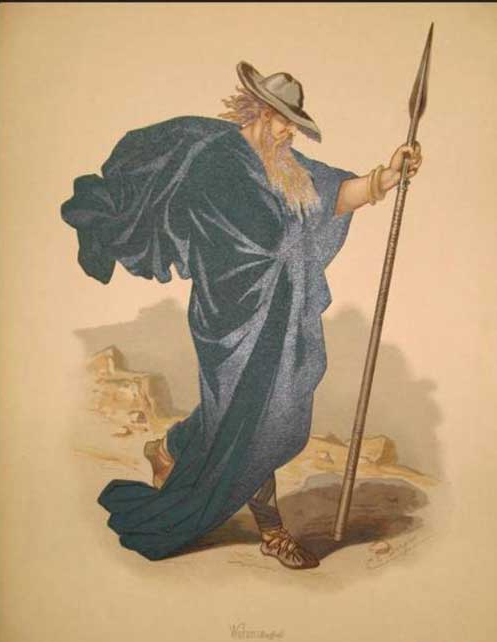
Plato’s Republic [621 621a]:
And after it had passed through that, when the others also had passed, they all journeyed to the Plain of Oblivion, through a terrible and stifling heat, for it was bare of trees and all plants, and there they camped at eventide by the River of Forgetfulness, whose waters no vessel can contain. They were all required to drink a measure of the water, and those who were not saved by their good sense drank more than the measure, and each one as he drank forgot all things. [621b] And after they had fallen asleep and it was the middle of the night, there was a sound of thunder and a quaking of the earth, and they were suddenly wafted thence, one this way, one that, upward to their birth like shooting stars. Er himself, he said, was not allowed to drink of the water, yet how and in what way he returned to the body he said he did not know, but suddenly recovering his sight he saw himself at dawn lying on the funeral pyre.—And so, Glaucon, the tale was saved, as the saying is, and was not lost. [621c] And it will save us if we believe it, and we shall safely cross the River of Lethe, and keep our soul unspotted from the world. But if we are guided by me we shall believe that the soul is immortal and capable of enduring all extremes of good and evil, and so we shall hold ever to the upward way and pursue righteousness with wisdom always and ever, that we may be dear to ourselves8 and to the gods both during our sojourn here and when we receive our reward, [621d] as the victors in the games go about to gather in theirs. And thus both here and in that journey of a thousand years, whereof I have told you, we shall fare well.
All of Greek Philosophy is beholden to and commentary on the Orphic and Pythagorean mysteries that are understood as arising from the Hyperboreans and their intermediary cultures of the Thracians and Scythians. The Orphic rites are central focused on retaining the Memory in the afterlife, the ability to recall One’s divine heritage and to remember which spring to drink from and which to avoid. Just as Zeus incarnates as a shepherd, exiled to this world, he seduces Mnemosyne, the Goddess of Memory to produce the Nine Muses as the way to liberate and purify the human condition, to Remember the Organic Light as discussed by Plato, again, those that Remember the light the most became the Gods, those who remembered a portion are incarnated as Philosophers, and those who do not retain any memory are the masses. This is also discussed in Orphic series Vol.2 and especially in Mnemosyne (forthcoming) as the core of the Mysteries that endure and are Remembered into the ‘Viking Era’ of Odin’s quest for springs of Memory, and other consistent symbolism of the Orphic tradition (visionary herbs, magical oracular heads, nine nights of rituals, sacred poetry). But these are Thracian, Scythian, Hyperborean, and Primordial doctrines (See Hyperborean Research Society Monograph V.1) that are also present in Aryan/Vedic culture and Traditions. Such a river of the underworld, crossed by “mind” is mentioned in the Kausitaki Upanisad 1.4. and other texts, Vaitarna or Vaitarani (Vaitaraṇî) river, as mentioned in the Garuda Purana and various other Hindu religious texts, lies between the earth and the infernal Naraka, the realm of Yama, Hindu god of death, and is believed to purify one’s sins. Furthermore, while the righteous see it filled with nectar-like water, the sinful see it filled with blood. There are a few ways across, such as heroic deeds, a true Guru’s assistance, or remembering to say Shree Gurudeva Datta.
We quote the Orphic fragment 32: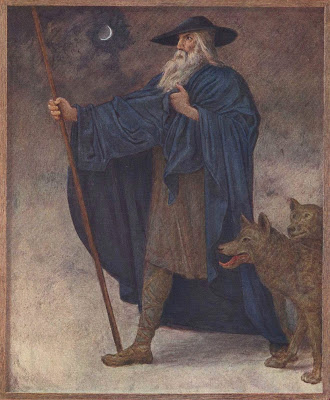
“Thou shalt find to the left of the House of Hades a Well-spring,
And by the side thereof standing a white cypress.
To this Well-spring approach not near.
But thou shalt find another by the Lake of Memory,
Cold water flowing forth, and there are Guardians before it.
Say: ‘I am a child of Earth and of Starry Heaven;
But my race is of Ouranos. This ye know yourselves.
And lo, I am parched with thirst and I perish. Give me quickly
The cold water flowing forth from the Lake of Memory.’
And of themselves they will give thee to drink from the holy Well-spring,
And thereafter among the other Heroes thou shalt have lordship…”
(trans. from Prolegomena to the Study of Greek Religion by Jane Ellen Harrison, 1903)
And into the lore of Odin,
I know where Othin’s eye is hidden,
Deep in the wide-famed well of Mimir;
Mead from the pledge of Othin each morn
Does Mimir drink: would you know yet more? Völuspá
This is the Mímisbrunnr and the etymology of this is ‘Memory Spring,’ and it must partake of truly ancient Aryan and Hyperborean associations of a spring of eternal life. In the Gylfaginning, “And under the that root (of Yggdrasill, the world-tree)… is Mimir’s Spring, in which knowledge and understanding are hidden. He who owns that spring is called Mimir, and he is full of wisdom, because he drinks from that spring of the Gjallarhorn.” The etymology of Mimir is to remember, to recall, the merging of mind/and memory, also the ravens of Odin. Again, this is the subject of an entire monograph, but what is essential for this discussion is it is the Memory of Godhood, of the Supernal Light, of the formula and Self that is trained for within the ordeals, initiations, and in the various phases of life as one prepares to encounter the final test in the waters of deep abyss of the underworld.
To renounce the red dust of the world and to seek the higher liberation and Dharma is the Great Renunciation and Departure (Abhiniṣkramaṇa) that is a self-imposed exile from all that is comfortable, normal, or secure. It is said the Buddha attained the ability to recall a vast number of past lives (or ‘past abodes’ (pubbe nivāsa) of wandering in a body in a pre-enlightened state), along with numerous details about them. Early scriptures also state that he could remember “as far as ninety-one eons” (Majjhima Nikaya i. 483) with previous lives vows and remembrance culminating into mahaparinirvana, the immortal state of godlike existence of an eternal, imperishable self. In Shaivite theology this understanding through memory is Pratyabhijñā, formed from prati– (“re-“) + abhi– (“closely”) + *jñā (“to know”), so the meaning is regaining “direct knowledge of one’s self.” The symbolism and language is of a “slave” (paśu: the human condition) shakes off the fetters (pāśa) and becomes the master (pati: the divine condition). Smriti (Memory or Tradition) is the name of the daughter of Dharma and Medha (Medha is intellect, Goddess Saraswati). God’s incarnate, and so do daemons, good and bad, to influence this world. Avatars and Buddhas, or Deities incarnate in times of crisis and take on the human experience (which is not unique to Christianity) to act as saviors or to restore Rights and Justice. Bhagwat Geeta, Lord Krishna has told: “Whenever Truth, Dharma, and Peace will be vanished from Earth I will incarnate on Earth to re-establish them.” The Mysteries, the Dharma, the Philosophic Path and Theurgy, etc. are all to train to Remember the self across the flowing streams of karma and rebirth, and to liberate the soul from the fetters of the karmic interplay of Love and Strife, an ascension of the soul’s return back to its rightful place beyond the spheres to the Super Celestial Light. Many try to end this process with a unification, a dissolution of the self, but it is a process of retaining True Self. “…there remains must be the Eternal; if there is no more any sorrow, what there remains must be Bliss; if there is no more any non-Self, what exists there must be the Self; if there is no longer anything that is impure, what there is must be the Pure.”
Daemonic Cycles and Yugas
“Rama has to take refuge in the forest of Dandaka for fourteen years and let him become an ascetic wearing rags, deer skin and matted hair”.
We must also reckon time, years and cycles with the divine experience of aeons or thousands or tens of thousands of years and a ‘day’ or the days as thousands of years, representing vast mythological, cosmological and astrotheological cycles. Thus, increments of ‘nine days’ or ‘nine years’ might mean 9,000, or the number before the full cycle of 10,000 and various cycles of world ages or yugas (which, like yoga (yoke, union), can mean ‘yoke’ (joining of two things) and is therefore linked with periods of labor, cattle, farming, and slavery as discussed below). The sky holds the spheres of the celestial immortals, the planets are the Gods, and they literally wander (as wandering stars ἀστήρ πλανήτης (astēr planētēs), meaning ‘wandering star’, planetes, meaning “wanderer”). This realm is the ‘underworld’ to the Gods, just as there is a human underworld where one must Remember their divine heritage and assert their divine rights to drink of the waters of Memory. If we get visions of the astral realms within taking the visionary herbs, what do the Gods see when they drink their celestial elixirs, mead or soma?
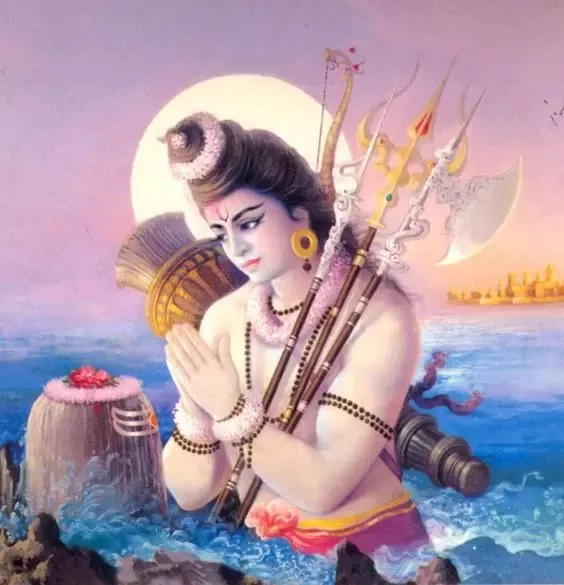
A Divya Yuga (दिव्य युग ’a divine or celestial age’) is a cyclic age of Gods (Devas) encompassing the four yuga ages (a.k.a. “human ages” or “world ages”). The Hindu texts give a length of 12,000 divine years, where a divine year lasts for 360 solar (human) years. Rama was exiled for 14 years. The Pandavas spent 12 years in forests (besides a year in a town incognito) for a total of 13 years, just shy of the 14 year cycle. There were legalistic implications that if one was banished for more than this increment of time, they were considered dead and unable to be restored of any property, rank, privilege. This would apply to the Gods in their reckoning of divine or celestial time as well. There is much lore of why 14 is so important, but its actual name has the meaning 9 + 5 years = 14 years, Nava varshaani pancha means “nine + five” = fourteen (varshaani means ‘so many years ago’). The commentary on the Dance of Shiva in the Shiva Sutras gives deeper insight into the sacred numerology of 14:
The silent Siva remains still [as Daksinamurti]. But the same Siva [in another form of his] keeps dancing all the time and it was from his dance that the science of language was born. Nataraja is the name of the dancing Paramesvara. “Nata” is a member of a troupe which also consists of the “vita” and “gayaka”. The nata dances. Nataraja is the king of all dancers– he who cannot be excelled as a dancer– and he is also called Mahanata [the great dancer].
“Nrttavasane. . . ” Nataraja performs an awe- inspiring dance. It seems to bring together all the dance that all of us have to perform, the rhythms of all our lives. Nataraja has a drum in one hand, called the dhakka or damaruka. The tala of this drum (the time kept by it) is in keeping with the “footwork” of the dancing god, the movement of his feet. The beat of his drum is referred to in the words, “nanada dhakkam.” When Nataraja dances, Sanaka and his brother sages, Patanjali Vyaghrapada and so on stand round him. They are great ascetics, so they are able to see the dance. At the close of the dance, the concluding beats (cappu) produced fourteen sounds. It is these fourteen that are referred to in the stanza (“Nrttavasane,” etc.) as “navapancavaram”; “nava” is nine and “panca” is five, so fourteen in all. “Nanada dhakkam navapancavaram. The fourteen sounds produced by Nataraja’s drum are the means by which the reality of Siva is to be known and experienced within us in all its plenitude. Nandikesvara has commented upon the fourteen sounds in his Sivabhaktisutra. The fourteen sounds are recited at the upakarma ceremony. Since they emanated from the drum of Mahesvara(Nataraja), they are called “Mahesvarasutras”. Human beings can produce only inarticulate sounds on the musical instruments played by them. The hand of Paramesvara is verily the Nadabrahman and Sabdabrahaman incarnate, so his cappu on the damaruka at the conclusion of his tandava sounded as a series(garland) of fourteen letters: 1. a i un; 2. rlk; 3. e on; 4. ai auc; 5. hayavarat; 6. lan; 7. nama nana nam; 8. jha bha n; 9. gha da dha s; 10. ja ba ga da da s; 11. kha pha cha tha tha catatav; 12. kapay; 13. sa sa sar; 14. hal-iti Mahesvarani sutrani. Though the musical instruments do not produce articulate sounds, they create the impression of producing the phonemes of human speech. If this be so in the case of instruments played by humans, why should not the drum beaten by Nataraja during his pancakrtya dance produce articulate sounds? How did Panini make use of the fourteen sounds? He created an index from the sutras to vocalise the letters or syllables together. According to the arrangement made by him, the first letter or syllable of a sutra voiced with the last letter or syllable of another sutra will indicate the letters or syllables in between. For example, the first syllable of “hayavarat”, “ha”, and the last letter of “hal”, “l”, together make “hal”. This embraces all the consonants in between. Similarly, the first letter of the first sutra, “a”, and the last letter of the fourth sutra together form “ac”-this includes all the vowels. The first letter of the first sutra and the last letter of the fourteenth sutra together form “al” – it includes all letters. “Halantasya” is one of the sutras of Astadhyayi. “Al” itself has come to mean writing. “A-kara” is the first letter in all languages. In Urdu it is alif; in Greek it is alpha. Both are to be derived from “al”. So too “alphabet” in English. Here is another fact to support the view that, once upon a time, the Vedic religion was prevalent all over the world.
The Jnanendriyas are the five lower sense organs, referred to as ears (shotra), eyes (chakshu), nose (grahnu), tongue (jivha) and skin (tvak). Karmendriyas are the organs that interact with the material world. The Karmendriya (कर्मेन्द्रिय) are the Five Faculties of Action (Karmendriya) vak-tattva: speech (voice), pani-tattva: grasping (hands), pada-tattva: walking (feet), payu-tattva: excretion (anus), upastha-tattva: procreation (genitals). These ten combine with the four phases of mind our functions of the mind, namely the manas (the mind or lower mind), buddhi (the intellect or higher mind), chitta (memory, or, consciousness), and ahamkara (ego, or, I-maker). Antaḥkaraṇa has also been called the link between the middle and higher mind, the reincarnating part of the mind. These total 14, nine plus five.
These numbers and their associations, especially of nine years or nine nights is important below, with an example that Zeus, in exile and in disguise as a shepherd or (or cowherd) seduces the Goddess Mnemosyne to give birth to the nine Muses, or the nine nights it took Odin to discover the runes, or Apollo’s nine years exiled as a pastoral God. Again, we emphasize the breakdown of the term of exile: Devathas made her ask the boon as “Nava Panchaka Varshani” meaning 9 plus 5 years of exile instead of “Chaturdasha Varshani” meaning 14 years. The texts are clear, such as in Ayodhya Kanda, Sarga 11, Sloka No 26. The sloka reads as below. नव पञ्च च वर्षाणि दण्डकारण्यमाश्रितः Thus, Kaikeyi asked Rama to be sent to forest for 9 years and then again for another 5 years. After 9 years, Rama takes a short break from exile and then again goes back for another 5 years. The ancient reckoned the cycle of 10,000 years by a count of 9,000 that then begins on the 10,000. Returning to the Greeks:
From Hesiod’s Theogony, “For whoever of the deathless gods that hold the peaks of snowy Olympus pours a libation of her water and is forsworn, must lie breathless until a full year is completed, and never come near to taste ambrosia and nectar, but lie spiritless and voiceless on a strewn bed: and a heavy trance overshadows him. But when he has spent a long year in his sickness, another penance more hard follows after the first. For nine years he is cut off from the eternal gods and never joins their councils or their feasts, nine full years. But in the tenth year he comes again to join the assemblies of the deathless gods who live in the house of Olympus. Such an oath, then, did the gods appoint the eternal and primeval water of Styx to be: and it spouts through a rugged place.”
This can be compared with writings of Empedocles:
“There is an oracle of Necessity, an ancient decree of the gods, Eternal, sealed by broad oaths: Whenever by crimes some one [scil. of them] pollutes his limbs, by murder <…> whoever commits a fault by perjuring himself on oath, The divinities (daimones) who have received as lot a long life, Must wander thrice ten thousand seasons far from the blessed ones, Growing during this time in the different forms of mortal beings, Exchanging the painful paths of life. For the force of the aether chases them toward the sea, The sea spits them out toward earth’s surface, the earth toward the rays. Of the bright sun, and he [i.e., the sun] hurls them into the eddies of the aether. Each one receives them from another, but all hate them. Of them, I too am now one, an exile from the divine and a wanderer, I who relied on insane Strife.”
From Empedocles: the wandering daimon and the two poems (O’Brien 2001):
“The daemon’s fate reworks a passage from Hesiod’s Theogony (775–806) that recounts the prerogatives of the goddess Styx, who, after strife and quarrels have emerged, punishes the gods’ perjury with an exile of nine years. Yet, as in On Nature, the four roots are crucial—air, water, earth, and fire play a key role in the cycle of incarnation, successively expelling the daemon from their spheres of influence. Details on the beginning of the cycle remain frustratingly unclear. At what stage in the rising influence of Strife the gods pollute themselves is ambiguous, as are the precise conditions under which the gods become daemons. As in epic and tragedy, there may be “dual motivation”: Strife provokes transmigration, but the daemon remains accountable for its crimes… One part of the cycle begins under the total domination of Love through the Sphere, with Strife exiled from the four roots. After these have become blended, Strife “leaps” into action, becoming the motivator of the pollution by those gods who perjure a sacred decree governed by Necessity. This triggers a chain reaction of banishment and wandering for the newly fallen daemons…”
The elements or four roots, plus consciousness as the fifth that mediates love and strife, correspond to the God’s exile of nine years in the symbolic number of 14. As scholars note, “the daemon is happy before the beginning of his wandering period and after its conclusion. Empedocles identifies himself as a daimôn (B115) and elsewhere as a god (B112), In the fragment of Empedocles B115, His (the daemon’s) suffering begins with bloodshed and perjury, reaches its zenith (or nadir) at mid-point, and ends when the daemon finds again a place in the company of blessed gods. The daemon’s exile from home signals a period of 30,000 seasons, probably the equivalent of 10,000 years, when the daemon finds himself in alien places (B115.6-11) or assumes alien garments (B126; cf. B115.7). The penalty for his transgression consists in a period of successive incarnations in ever worse life forms until he reaches ultimate misery. Then a series of successive incarnations in ever better life forms begins. If the first series of incarnations indicates increased alienation from home, this second series indicates gradual proximity to home. B146 refers to this second series of reincarnations: “By the end”, it says, “they become seers, minstrels, physicians and leaders for the sake of earth-dwelling men, whence gods highest in honour spring.”
The incarnations, of seers, minstrels, doctors and leaders were thought in the ancient times to be those with the highest ability to teach and ease the suffering of men. A prime example is found in the Vita Merlini, or The Life of Merlin where after a traumatic loss, Merlin as a prophet/seer (vates) goes mad and runs off into the Caledonian Forest, where he lives on grass and fruit. Merlin is returned to sanity and lucidity by the sweet song that ignites his human empathy and compassion, his love. These positions of leaders, religious figures, occult groups are also the choice roles for the bad daemons to incarnate to sow strife and suffering. In the modern world, where Tradition has been obliterated, these designations are largely meaningless as we will live in a degenerate, decadent world age. The silent, anonymous adept that pursues the Mysteries combing the Philosophical life with that of the healer, the hero and farmer that creates microcosmic kingdoms of the Gods in their homesteads, and mountain and forest compounds.

Rama Sita and Lakshmana in the Forest, the phase of hunting and wearing leaves, animals skins, is recreated in highest Tantric Rites and many other lineages where the adept must go alone or with a consort and live completely from the land. There is always an erotic component implied with the forest retreat with a female, as she represents the Goddess and a person is either alone, with a female companion, or there are a few companions and a female, such as the Pandavas, pictured below, leave in exile with their wife Draupadi. This is likely also a primordial ritual reenactment of the migration period, the profound Exile from the Homeland and sacred center and the careful preservation of the female, as mother and avatar of Goddess that is crucial for the next generation to be born. The dice game that is at the core of the Yugas and the Mahabharata is also an esoteric metaphor for a circumnavigation of a central origin point, large square in the centre, called the Charkoni (Char koni means four corners symbolling the mandala of the origin point and central point or Mt. Meru, which is the starting and finishing position of the pieces to which one must return. It is the demons that trick one into exiles within exiles, dreams and delusions within the gamble, the spinning wheel of karma that mediates between Love and Strife.
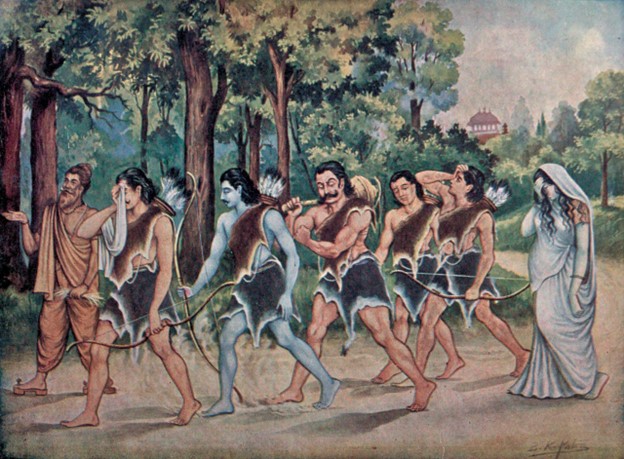
Punishment and Purifications
The profound understanding of exile is so central to the esoteric doctrines of being separated from the company of the Blessed, from the source of life, from all contexts and meaning (Master Narrative), all resources, all securities and comfort that it is also the central form of justice in Indo-Aryan societies. This reflects removing one from the community as punishment, either temporary or permanent, in ways that persist into Norse and Germanic culture as discussed below. The concept of exile, sometimes voluntary or as a stage in life is the intentional renunciation, or withdraw such as the holy man, ascetic, the person who has concluded the phases of life of the exoteric Dharma and retire to the forest to pursue the esoteric path in life. (It also had a function, missing in our society, in which the old cling to their status and possessions, of retiring the aged so that the young can take their rightful place in society, and replaced ancient customs of ‘killing the King’ or overthrowing the older generation which was the root of many of the Wars of the Gods.)
The four asramas are: Brahmacharya (student), Gṛhastha (householder), Vanaprastha (forest walker/forest dweller), and Sannyasa (renunciate). The Asrama system is one facet of the Dharma concept in Hinduism. Vānaprastha (वानप्रस्थ) is a composite word with the roots vana (वन) meaning “forest, distant land”, and prastha (प्रस्थ) meaning “going to, abiding in, journey to”. Saṃnyāsa in Sanskrit, nyasa means purification, sannyasa means “Purification of Everything” in preparing for the supreme initiation of Death. The final phases is thus a self-imposed exile from the comforts of life, a total self-abnegation and willful surrender to fate, without complaint and training to encounter and cross the threshold of life and death. There are many Traditions of forest Rishi, the Thai Lersi hermits, all tracing back to the central theme of the forest traditions such as the “Aranyaka” (āraṇyaka) literally means “produced, born, relating to a forest ” or rather, “belonging to the wilderness”. It is derived from the word Araṇya (अरण्य), which means “wilderness.”
The exile, either voluntary or imposed, is a time of purifications, which is also part of the phases in life to regain health from normal human experience that is experienced through sickness. In the great myths and sagas, the hero is often supported by one God and antagonized by others, and the human experience and this world is like a proxy war of the Gods. The great Homeric epics are all an exile from home in a long, dangerous journey, with a descent into deeper and deeper banishment from home, comfort and security. Zeus in Homer’s Iliad is said to make men exiles, driving them like a gadfly over the face of the earth (24. 532 f.). But the hero grows, evolves, the strength and fire to persist and overcome, to transcend circumstance, karma, destiny, wyrd and fate is done by burning away all the limitations and obstacles through pure furious striving and effort. It is the radical, relentless application of the highest meditation of thought, word and action over a lifetime.
“Tapas is based on the root Tap (तप्) meaning “to heat, to give out warmth, to shine, to burn”. The term evolves to also mean “to suffer, to mortify the body, undergo penance” in order to “burn away past karma” and liberate oneself. The term Tapas means “warmth, heat, fire”…which is the generation of the secret, mystical, alchemical fire that liberates the ensnared consciousness from the fetters of merely the human experience. Catharsis (from Greek κάθαρσις, katharsis, meaning “purification” or “cleansing” or “clarification” purification (German: Reinigung), Proto-Germanic *hrainisōną (“clean, cleanse, purify”).
The true tapas can empower the adept to gain enough energy, bliss and focus to bless or curse the Gods themselves, such as Durvasa. He caused the exile of a Goddess, Saraswati, whom he cursed to be born as a human because she laughed at his incorrect recitation of the Vedas. Lord Vishnu was cursed twice that he will have to suffer the pain of separation from his Laxmi. Narad cursed Him that He’ll get separated from Laxmi(Sita) for one year. Second curse which separated them from each other in Uttar kand was given by Rishi Bhrigu (Shukracharya’s father). Sage Bhrigu was furious because Lord Vishnu broke his Dharma by killing a woman. Therefore, Maharishi Bhrigu cursed Lord Vishnu to be born on Earth many times and suffer the pain of birth and death all those several times. Due to this legendary curse, Vishnu had to take many avatars Sanskrit avatāra ‘descent’, from ava ‘down’ + tar- ‘to cross’.on Earth and endure all the worldly pain as a price, Lord Vishnu will appear for the last time as Lord Kalki during the end of Kali-yuga when evil will be rampant upon the earth and will restore peacefulness by killing all evils.
This is the essence of the Buddha Dharma, in training the Mind in the 8-Fold path and compassion as upaya (skillful means) to be unfettered by attachments and strife generated by incorrect or inappropriate or hubris action. Buddhahood already lies within all beings as an innate spiritual nature. This spiritual nature is concealed by ignorance and multitudes of afflictive factors – the kleśas – and needs to be awakened and revealed. This can be done in this body, in this life time through the proper training to achieve the Dharmakaya or eternal body, the eternal Buddha Self that is the Daoist True Immortal or True Human Being Real Man, or Perfected (zhenren) the feathered immortal soul that flies and ascends back from exile to the Isle of the Blessed, the Holy Mountain, the Celestial Vault.
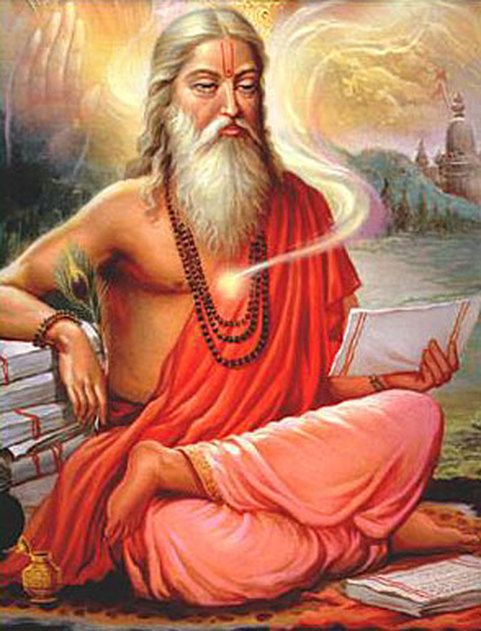
“Punishment arises through exile from the gods and a long wandering; the daemon is hated by all and reliant on Strife. Neither Zeus nor Hades will receive it.” Empedocles as an initiate came to apprehend his divinity, as Sextus wrote that “Empedocles called himself a god because, having kept his mind pure from baseness and unpolluted, he alone apprehended the god without by means of the god within himself.” The Purifications was the Master Narrative of initiation and the skillful means to cleanse the dross aspects of this incarnation that obscure one’s true divinity.
Quoting Kingsley and Parry: The persona loquens laments, “I wept and wailed when I saw an unaccustomed place,” and finds himself, “Far from what honor and from what abundance of bliss”…. Transmigration as part of the ritual of purification mandates partaking in a world of suffering in which all life is fated to be born, become corrupt, and die. This reasserts the doctrine in On Nature that all things are mortal except for the four roots and Love and Strife, which combine and break down matter. Empedocles narrates his own dissolutions and recombination,
For as for me, once I was already both a youth and a girl
a bush and a bird, and a sea-leaping, voyaging fish.
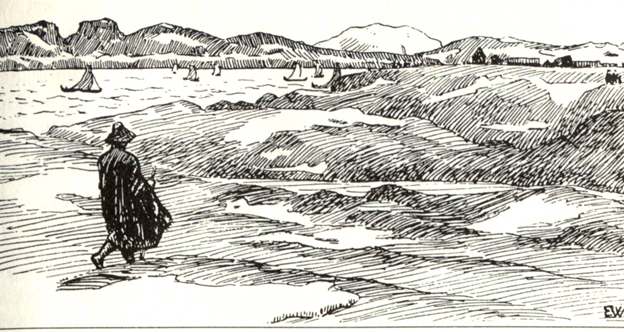
Paths of Exile
The Wanderer (extract from the Anonymous Old English Poem)
The solitary one often awaits prosperity for himself, favor of fate, although he, troubled in mind, through sea-¬ways long had to stir with hands rime-¬cold sea, to trudge the paths of exile. Fate is fully inexorable!
So said the wanderer, mindful of hardships, of wrathful slaughters, with the fall of beloved kinsmen:
He knows who knows first-¬hand how cruel sorrow is as companion to him who for himself has few beloved confidants:
path of exile holds him, not at all twisted gold, frozen heart, not at all wealth of earth. He remembers retainers and receiving of treasure, how in youth his gold-¬friend accustomed him to feasting. All joy has perished!
Exile (v.) c. 1300, from Old French essillier “exile, banish, expel, drive off” (12c.), from Late Latin exilare/exsilare, from Latin exilium/exsilium “banishment, exile; place of exile,” from exul “banished person,” from ex “away” (see ex-); according to Watkins the second element is from PIE root *al- (2) “to wander” (source also of Greek alaomai “to wander, stray, or roam about”). De Vaan expands on this: Several etymologies are possible. It might be a derivative of a verb *ex-sulere ‘to take out’ to the root *selh- ‘to take’, cf. consul and consulere; hence exsul ‘the one who is taken out’. It might belong to amb-ulare < *-al- ‘to walk’, hence ‘who walks out’. It might even belong to *helh-, the root of [Greek elauno] ‘to drive’: ex-ul ‘who is driven out’ [de Vaan, “Etymological Dictionary of Latin and the other Italic Languages”]. ἀειφυγία; aeiphygía). Permanent banishment; in Athens archaic punishment for φόνος (phónos, homicide), τραῦμα (traûma, bodily harm) and τυραννίς (tyrannís), pronounced by the Areopagus as a ‘special court’ (not by the Heliaia in normal dikasteria). Banishment (φυγή) is literally “flight” which can imply retreating, seeking refuge or fleeing a punishment as well as being made to take flight as being banished. exile exulis / exilium refers to a banished man forced to leave his home(land), as well as to a person who decides to leave his home in order to avoid punishment. Yet, as Christine Brooke-Rose also points out, “the Latin exsilio means ‘to spring forth’ and with Old French the verb exilier or essilier meant ‘to ravage,’ ‘to devastate,’ a shift in meaning still traceable inexterminate, literally ‘to drive beyond boundaries. Wrecca exile Old English ‘wrecca’ (exile), is related to Old High German ‘reccho’ meaning ‘exile, adventurer, knight errant’ the Grail hero, who is the fool exiled into the forest, Parzifal. If we assume exillis in MS D to be an ablative plural of exilium, we may read lapsit exillis as “It fell among conditions of exile” from the heavens (or Lucifer’s crown, but not the Biblical Lucifer truly, but the Orphic deity Phanes).
Well, let it be so. You see my exile, old man;
you see my hands stained with my children’s blood.
Give them a tomb and all the honors of the dead, 1360
weeping over them (since the law [nomos] forbids me). Euripides, Herakles
To be a hero is a Way to immortality, a restoration or achievement of godhood that entails many trials, ordeals, banishments which begins from the base state of exile, oulaw, fugitive or madman to God. Such are the Labors of Herakles, atonement for sins committed during mad rage. Odin is exiled, in one telling in disgust of his wife’s conduct, in another for his own suspected misconduct, possibly of ‘unmanly’ sexual magical practices (to gain magical insight to escape his enemies, we continue this discussion in depth in Bǫlverkr V.1). A succinct account of this aspect of the exile,
“Odin is telling Agnar here that he shall have not only the grace of Ullr — who, according to Book Three of Saxo, had been “invested … with the trappings of royalty and godhead” in the “stead” of Odin during his exile — but of allra goða — all the gods. This is a foreseeing (“forspár og fjölkunnigur”, Ynglingasaga 5) of a reunion of the gods, spoken of as well in Saxo, Book Three : “For almost ten years he [Ullr] held the leadership of the divine parliament till the gods finally took pity on Odin’s harsh exile. Reckoning that he had completed a severe enough sentence they restored him from filthy rags to his former splendour. By now the passage of time had rubbed away the brand of his past disgrace.” (Ynglingasaga 11 informs us that while Ullr may have held the command of Asgard, Njord was considered the supreme holder of sovereignty, as lord of the Vanir, so Ullr had ruled at Njord (and the rest of the Vanir)’s pleasure.)
Saxo is in touch with a tradition that placed Odin in “Byzantium” (Book One and Book Three) around the time that “he took to exile replete with an honest shame, thinking he would thereby obliterate the stain of his disgrace”.
Saxo is also in touch with a tradition which alluded to Odin saving up wergild for his crimes while he was in exile. “Some people assert that by flattering a few of the gods and buttering others with bribes he purchased his lost royal status and bought back at a costly sum the glories he had long since forfeited.” (Book Three.)”(O’Harris 2007).
Consider Old Norse categories such as the Skogarmaor (meaning “man of the forest”), also called útlagi (meaning “outlaw”), is a Norse outcast who has been banished from their community for various crimes. This is comparable to the Vanvas (Sanskrit: वनवास, is a Sanskrit term meaning residence (vās) in a forest (van)). While it can be undertaken voluntarily, it usually carries a connotation of forced exile as a punishment. Vanvas in Ramayan and Mahabharat are for Tapasya, the ascetic generation of the spiritual fire, the inner purifications. Vanavasa was given to a person with the intention of keeping him away from the society so as to maintain peace, but in real terms exile helps to the person to increase his spiritual power which Rama and Laxman, Incarnation of gods, took benefit of it to kill Ravana and his family.
The justice systems of the worldly cultures were based on the celestial order, the understanding of banishment from the central sacred center and blessed community. No matter if outlaw, voluntary, punishment or for spiritual purification, the intention at the core is not death but refinement and redemption and to learn, to realize, to be tested and tried in the fires of matter and experience. The Gods are to taste the human misery, the human to lose all human comfort of civilization, and in doing so they discover, through the sacrifice of self to Self, their true Self and identity. It is thus the supreme initiation, the trial and ordeals that are perquisites to individuation, of knowledge of self: kaivalya. Yogatattva Upanishad (16–18) reads, “Kaivalya is the very nature of the self, the supreme state (paramam padam). It is without parts and is stainless. It is the direct intuition of the Real-existence, intelligence and bliss. It is devoid of birth, existence, destruction, recognition, and experience. This is called knowledge.” Kaivalya, (Sanskrit: “separateness”) in the Samkhya school of Hinduism, a state of liberation (moksha: literally, “release”) that the consciousness of an individual (purusha: “self” or “soul”) achieves by realizing that it is separate from matter (prakriti).
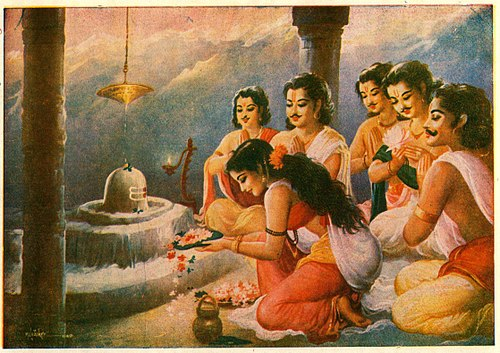
Draupadi with the five brothers, the the Pandavas, are demi-gods, each fathered by a different deity. The brother Yudhishthira lost his wealth, kingdom, and possessions due to his gambling, which was also attributed to Shakuni rigging the dice game but it is the workings of the demon Kali, who waited 12 years for this attack. Therefore, the Pandavas were sent into exile for thirteen years. After spending twelve years of forest exile, they lived in disguise in the Matsya Kingdom for one year. This exile, like other Gods, is a time to amass an army to avenge and wage war on the demonic forces. Odin’s exile on earth is a similar recruitment period for warrior. The brother’s shared a common wife, as did Odin and his brothers Odin and his two brothers, Vili and Ve (some sources name the gods Odin, Hoenir, and Lodur, Hárr (“High”), Jafnhárr (“Just as High”), and Þriði (“Third”)). Vili means “Will,”and Vé means “Temple”, so just as with the Pandavas, the polyandry (Draupadi, daughter of the king of Panchala, is married to five brothers) is a ritual function of the Goddess and the Gods specific correspondences, as well as reflection of certainly strategic and sacred relationships amongst the highest class of royalty to preserve bloodlines. Even though the brothers are exiled for 13 years, the day they return is Dasera which is the tenth day of the Navaratri or ‘nine nights’ that Devi, the supreme Goddess, the divine pervading Shakti as the Supernal Light, defeats the demonic darkness. She fights the demon over nine nights in three forms, each having three forms. First she is Durga, then she is Shri Lakshmi, then she is Goddess Sarasvati. This is also the day Rama defeats the ten-headed demon Ravana in the Ramayana. Thus, like the Nine nights Zeus makes love to Mnemosyne as Supreme Goddess then births the Nine Muses, or Odin’s Nine Nights of hanging or his taking the place of the nine slaves for mead, or Nine years of slavery of various Gods, these are also linked with the seven spheres plus two, or the nine worlds (See Eta).
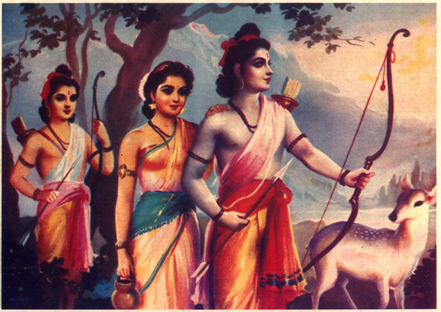
Rama, along with his younger brother Lakshmana and wife Sita, exiled to the forest
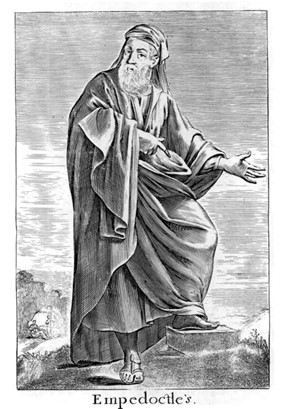 The exile of Philosophers is a constant theme from the Greeks such as Empedocles, Solon, Heraclitus, Democritus, to the philosopher meant an exile from the gods, then a further worldly exile from homeland, from family. The Philosophical discourse of many of these adepts is exegesis on the central themes of exile, of Memory and purification to retain their status. They understood their political or social exile as a further extension of the divine exile from the company of the Blessed. Many understood the implications of this truth into society, or the evolution of life, the individual’s place, and the extreme suffering of birth. Some understood life in such a way that it was necessary, and the majority lived a balanced understanding, still having family and children, and striving to create microcosmic versions of their divine homelands with sacred sites. The temples are reflections of these divine realms, their homes or regions recreations of Olympus, Asgard, Meru etc.. Some taught extremes to seek to stop incarnations, such as lifestyles of non-procreative sex, to other extremes that resulted in a perversion, degenerate understanding of the mysteries, a type of extreme disgust and hatred of the body, found in many gnostic traditions. There was a balanced “middle way” that used skillful means of certain ascetic practices, purifications, visionary herbs, erotic rites to awaken and Remember one’s divinity or divine origins, just as the Orphic injunction of asserting one’s divine heritage in the afterlife of “A child of Earth am I and of starry Heaven” is saying you are not ordinary mortals that are to sink to the mire of oblivion, lethe, and rebirth.
The exile of Philosophers is a constant theme from the Greeks such as Empedocles, Solon, Heraclitus, Democritus, to the philosopher meant an exile from the gods, then a further worldly exile from homeland, from family. The Philosophical discourse of many of these adepts is exegesis on the central themes of exile, of Memory and purification to retain their status. They understood their political or social exile as a further extension of the divine exile from the company of the Blessed. Many understood the implications of this truth into society, or the evolution of life, the individual’s place, and the extreme suffering of birth. Some understood life in such a way that it was necessary, and the majority lived a balanced understanding, still having family and children, and striving to create microcosmic versions of their divine homelands with sacred sites. The temples are reflections of these divine realms, their homes or regions recreations of Olympus, Asgard, Meru etc.. Some taught extremes to seek to stop incarnations, such as lifestyles of non-procreative sex, to other extremes that resulted in a perversion, degenerate understanding of the mysteries, a type of extreme disgust and hatred of the body, found in many gnostic traditions. There was a balanced “middle way” that used skillful means of certain ascetic practices, purifications, visionary herbs, erotic rites to awaken and Remember one’s divinity or divine origins, just as the Orphic injunction of asserting one’s divine heritage in the afterlife of “A child of Earth am I and of starry Heaven” is saying you are not ordinary mortals that are to sink to the mire of oblivion, lethe, and rebirth.
The intentional destruction and replacement of the Mysteries with corrupted versions are magical ‘traps’, snares and strategic tactics of the occult war to bind and fetter souls to a lower existence with no means to initiate and Recall. The obliteration of the Way is thus an even further exile, and one that can mean a permanent inability to regain or liberate from lower incarnation. As we suggest elsewhere, those that Remember their status three times in consecutive Philosophical life-times are thrice great, and liberated, thus the true master’s decline in this realm as they no longer are reborn in this low world. This is the origin of the Bodhisattva vow to remain in this realm until all sentient life (and all that appear human are not in anyway ‘sentient’) is liberated. The poet Sappho was exiled as well. Exile could be a punishment or a period of purification such as with Oedipus, who blinded himself and went into exile. For many thoughts on the situation and subtleties of exile, see De Exilio On Exile by Plutarch. This mythology is everywhere the Indo-European and Hyperborean lore is found, such as in Ireland: “The divinity of the Tuatha Dé Danann is still recalled. Eochaid O’Flynn (tenth century), doubtful whether they are men or demons, concludes, “though I have treated of these deities in order, yet have I not adored them.” Even in later times they were still thought of as gods in exile, The Religion of the Ancient Celts – John Arnott MacCulloch
An exile, I fare forth upon the deep, with my comrades and son, my household gods and the great deities VIRGIL, AENEID
Concealed Godhood and Vagabond Gods
The concealed Godhood theme is an Aryan concept, and it is the source of the Christian theology of the word Logos, made flesh or a savior God that comes to Earth. There were many savior Gods before Christianity, from Asclepius and heroes such as Herakles to much longer lists such as Krishna, Indra, Atys, Mmitra, Prometheus, Zalmoxis, Adonis. The story of Baucis and Philemon entails Zeus and Hermes came disguised as ordinary peasants that are seeking righteous, pious people and are given hospitality, crucially located in Phrygia for understanding the cultic origins. When the Gods come in disguise and one greets them with full respect and hospitality, this is known as theoxenia. Telemachus shows xenia to the disguised Athena in Book One of the Odyssey. In the Hrólfs saga kraka, the Saga of King Rolf Kraki, a number of themes are tied together as King Hrólfr departed with 120 men and his twelve berserkers and during a rest they were tested by a farmer called Hrani (Odin in disguise) who advised Hrólfr to send back all his troops but his twelve berserkers.
An incident that has ancient Indo-European ritualistic implications of a sword initiation (or weapon no one else can pull out, yield, or a bow no one can string) is found in the Völsunga saga. Here the marriage of King Volsung’s daughter Signy to Siggeir, king of the Goths is interrupted during the bridal feast by the arrival of a stranger, the god Odin in disguise as a hooded man with one eye, who drives a sword into a tree-trunk. Though everyone tries to draw the sword, Volsung’s son Sigmund is the only one who can, like King Arthur in the Grail myths. Hervarar saga ok Heiðreks (The Saga of Hervör and Heidrek) Gestumblindi sacrificed (see Blót) to Odin asking him for assistance in a contest of riddles (again involving 12 men with berserker-like qualities). Shortly thereafter, a stranger appeared at Gestumblindi’s homestead, and this stranger, Odin in disguise, also called himself Gestumblindi. The two men were so similar that no one could tell them apart and they changed clothes and Gestumblindi went away to hide and Odin, in disguise as Gesumblindi, goes on to wisdom and lore contest that is featured in other parts of the lore as a supreme initiatic function of Memory and testing.
Odin is the masked one (Grimnir Hooded, Masked One), and, as is said in the notes of the Grimnismol in Bellow’s translation of the Poetic Edda, “As in nearly every episode Othin appeared in disguise, the number of his names was necessarily almost limitless. Grim: “The Hooded.” Gangleri: “The Wanderer.” Herjan: “The Ruler.” Hjalmberi: “The Helmet-Bearer.” Thekk: “The Much-Loved.” Thrithi: “The Third” (in Snorri’s Edda the stories are all told in the form of answers to questions, the speakers being Har, Jafnhar and Thrithi). Such a battle of riddles is a contest of Memory of the lore, just as the seeress question by Odin “Remembers” the origins of the Gods and creation in Völuspá. This is a central theme in Odin disguised contest with Vafþrúðnir in the Poetic Edda poem Vafþrúðnismál.
The Gods, sages, and heroes engage in this practice, known in Vedic terms as Agyatvas, which is basically an incognito exile. An individual who is following agyatvas must hide the identity of himself/herself for a fixed tenure. The Pandavas ( पाण्डव, pāṇḍava) refers to the five brothers in exile in the Mahabharata: Yudhishthir disguised as minister of virat, kank; Bhimasen as cook, vallabh; Arjun as brahannala, teacher to princess uttara; Nakul as keeper of the horses, by the name granthik; Sahadeva worked as a cowherd in exile. The Gods as culture bearers, and the seers and wiseman and mendicant saints are known as parivrājakācārya, wandering all over the world and giving good instruction. Parivrājaka means wandering, and ācārya means teacher. For the true devoted mendicant (parivrājakācārya) one must experience all varieties of reality and creation by traveling alone through all forests, hills, towns. There are also dark forces that function in the same way, sowing strife and disorder, pain and misery and false-teachings.
The wandering period is broken by periods of slavery, or forest asceticism, or some task or ordeal that must be accomplished. The wanderer must go obtain various tonics, elixirs, meads, herbs to produce the purification and Ékstasis (ἔκστασις), the sources of secret fire, such as obtained from ascetic deprivations, fasting, sexual pleasure, magical visionary rites. Odin takes the places of nine slaves, as discussed with in the printed version of this monograph Bǫlverkr V.1, in his quest for the mead. He crosses a river to leave Asgard, and after causing the death of the ‘nine slaves’ he takes their place.
“Perhaps I can help by handling your fields.
I am Baleworker, best of farmers.
I offer to bale all of your hay,
to fill the shoes of your fallen slaves.”
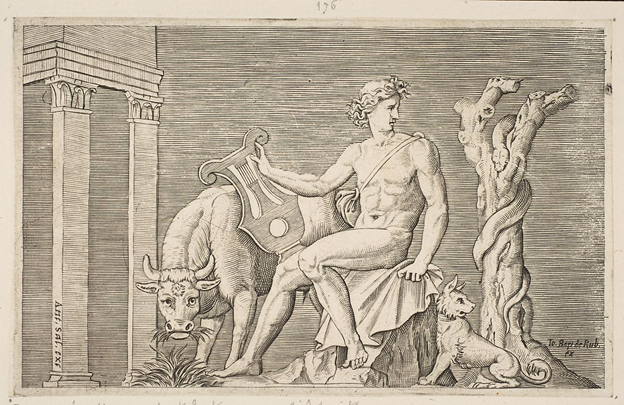
Apollo tending the flocks of Admetus, Apollo seated holding a lyre and flanked by a cow and a dog, a serpent winding around a dead tree at right.

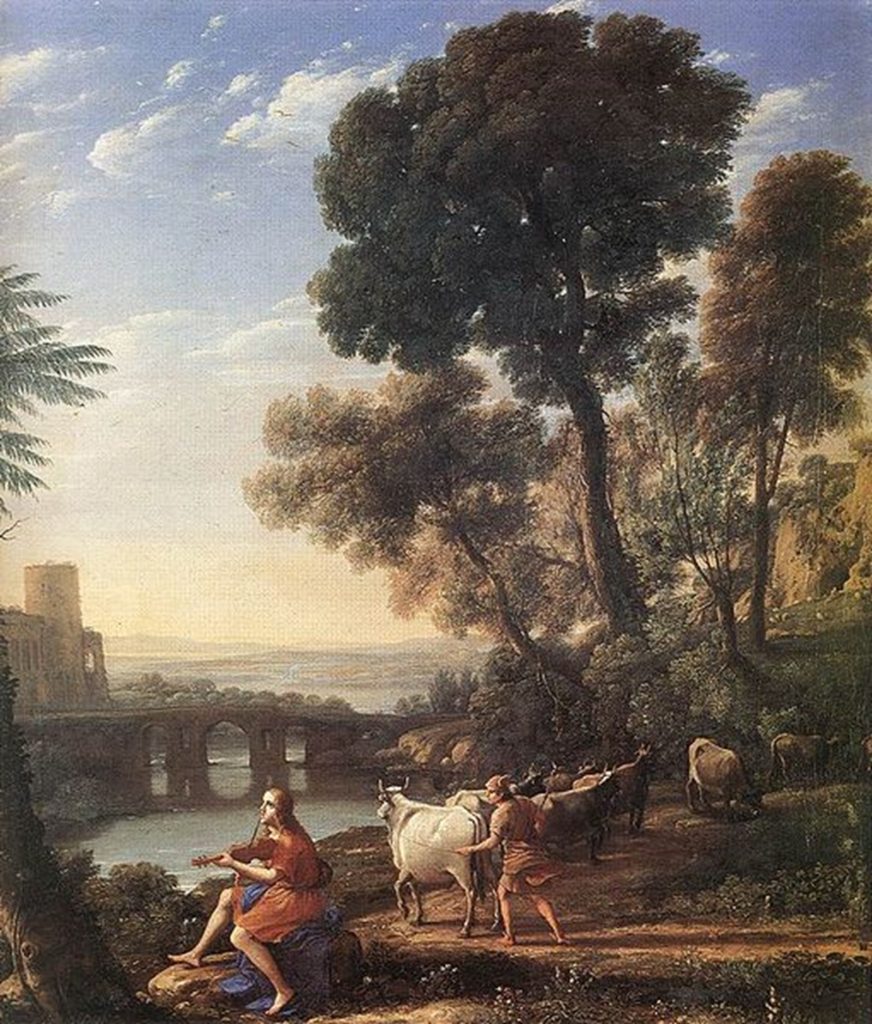
Landscape with Apollo Guarding the Herds of Admetus – Claude Lorrain (1604/1605–1682)
Pastoral Gods, Shepherds and Cowherds
There are many shepherd Gods, such as Pan in Greece (or forest godlike beings such as Silenus), the Vedic Pushan is a pastoral God and this is natural from pastoral societies. Hermes is considered a God of shepherds. The Vedic Rudra/Agni is called sometimes paśupati “the shepherd” in the Atharva Veda, and he is “lord of bountiful prosperity, has found a path for (his?) offspring, he who has found the sun, the shepherd of the clans, the begetter of the two worlds. The gods have held Agni as the giver of wealth.” Vishnu, especially in his cowherd form Krishna, is exiled to earth as a hidden avatar. Krishna is the Forest Cowherd, and names of Krishna, Gopāl and Govind. Go means cow and pāl means tends to; Gopāl is the one who tends to cow, nurtures, cares and provides for her. Vind means to find, thus Govind is the one who finds the lost cow, the cow that has wandered astray. He is always trying to save the cow from all the forces waiting to prey on her; but the mind through lack of control over its natural tendencies to stray, does not heed the call of the lilting flute and falls into the plight of its own temptations.

Pashupati (Sanskrit Paśupati; devanagari पशुपति ) is a Hindu deity and an incarnation of the Hindu god Shiva as “lord of the animals”

As a Vedic scholar notes this theme in all sects of Vedic traditions such as, “The Shaivite three components are easily understandable as pashu (litt. cow), pasha (litt. rope) and pati (litt. cow-herd). All atmans or pashus are eternally tethered by pasha and they don’t know their destination. There comes pati to rear them towards the Moksha. This pati differ from ordinary cowherd as he doesn’t obtain any advantages either by growing or shepherding cattle, and pashus cannot realize anything with their limited movement caused by pasha. It is the same language of yoga (to yoke) as mentioned above, and the notion of fetters, binding, or tethers. We do not have the space to discuss the implications on initiatory brotherhoods and cattle theft in the Indo-Europeans, or the extensive esoteric symbolism such as Hermes stealing the cattle from Apollo. This is a vast mythology of raids that inform cosmology, society, worldview and initiation, the tensions of security and war, property, wealth and death. There is much lore of the Cyclops, the “food for centaurs” and other such mysteries in this lore. There are instances when the shepherd is also the cattle thief, such as Cacus, a mythological Italian shepherd, who lived in a cave, and to have committed various kinds of robberies including theft of a part of the cattle of Hercules.
Apollo was supposed to work in servitude to a mortal, and so Apollo became herdsman to Admetus. King Admetus who ruled over a small kingdom in Thessaly and knew his subjects by name and so, one night when a stranger appeared at his door begging for food, he knew it was a foreigner and he must offer hospitality Xenia (ξενία). He fed and clothed the stranger and asked him his name, but the man would give no answer other than to ask Admetus if he could be the king’s slave. Admetus had no need for another slave but, recognizing the man was in distress, took him on as shepherd for his flocks. Here is exiled Apollo, incarnating as a slave or servant as a shepherd.

Hesiod and the Muse
Hesiod was a shepherd and wrote he was tending sheep, when a muse appeared to him. The solitary humble herdsman, alone, beholding the vault of heaven, tending his sheep in cloak and hat is the life that the race of men lived who understood through the Mysteries they were children of the Gods. Thus, the Gods would come to them in the guise of farmers, hunters, shepherds, cowherds and the Gods would likewise even assume these forms to seduce each other. Zeus, in a form of a mortal shepherd, and Mnemosyne slept together for nine consecutive nights, thus conceiving the nine Muses. The supreme Goddess Mnemosyne’s cult was the most secret truth of the Mysteries, and thus she is often relegated to a minor cult. But she is known to presided over a ‘spring of Memory” in Hades that the true initiate must drink from while asserting their divine heritage and to Remember to no drink river Lethe, according to a series of 4th-century BC Greek funerary fragments. Reincarnated souls would lose their memory, their continuity of self that is retained across lives and transmigration whereas the initiate was reminded they are Gods. Again, those that are initiated and Remember three times are liberated, and Thrice-Great. Zeus’ incarnation into a mortal, as some purification rite from the war of the Gods and bloodshed, is to manifest consciousness into corporeal form, perceived through the five senses and the nine gates of the body (the seven holes in the head plus genitals and anus) for a total of 14. Zeus takes the guise of a Shepherd to seduce the Goddess to birth her daughters the Nine Muses. The Nine muses and their Arts correspond to liberating the nine gates or nine slaves of the human experience that Zeus birthed as a means to transcend the fettered human experience bound and exiled to matter. The Nine slaves are discussed in Bǫlverkr V.1.
Demons often use disguises, and can also gain power through tapas and even boons from the Gods since tapas are rewards and the Gods must be fair. An example of demons in disguise is Sita’s kidnap: Ravana, King of the Demons, with 10 heads and 20 arms, watches Sita in the forest and falls in love with her. Ravana gets his evil servant, Maricha, to disguise himself as a golden deer and tempt Rama and Lakshman away from Sita. Lakshman draws a circle in the dust around Sita to protect her and tells her not to step out of the circle. Ravana disguises himself as an old beggar man or hermit, and begs Sita for food and drink. Sita takes pity on him and steps out of the circle. The beggar man becomes Ravana. Ravana catches Sita in his arms and pulls her into his magic flying chariot. The origins of the protection of magic circles and mandala and yantra originate with these heritage cultures. The Srimad Bhagavatam discusses the cow and Kali Yuga, and the evil demon Kali (many confuse this with the Goddess Kali) Parîkchit Received the Age of Kali Emperor Parikshit, the grandson of Arjuna, came across a Sudra dressed as a king who was beating a cow and an ox with a club. Parikshit immediately led his chariot over to the scene and angrily berated the sudra for abusing the sacred cow and her mate. However, the sudra was Kali and the cow and ox were embodiments of the earth goddess and Dharma.
(1) Sûta said: “Oh scholars, Parîkchit, the great devotee, thereafter, being instructed by the best brahmins, ruled over the earth with all the qualities that the astrologers, who predicted the future at the time of his birth, thought he would have. (2) He married with Irâvatî, the daughter of King Uttara, and begot four sons in her of whom Janamejaya was the first. (3) At the Ganges he performed three horse sacrifices wherein the demigods showed themselves. Kripâcârya, whom he had selected as his spiritual master, was therefore awarded appropriately. (4) Once on a military campaign he, the valiant hero, by dint of his prowess managed to overpower the master of Kali-yuga who had disguised himself as a king but who, lower than a s’ûdra [a laborer], was hurting the legs of a cow and a bull.”
(5) S’aunaka inquired: “Why did he during his campaign subdue the master of Kali who dressed up as a king like a low s’ûdra was striking the legs of a cow? Please oh fortunate one, describe that to us, if that would relate to the topics of Krishna. (6) What is the use of other subjects that being illusory do not relate to His lotus feet the nectar of which is licked by the truth-loving souls? That would be a waste of one’s life! (7) Oh Sûta, those among the mortal human beings who are sure to meet death here but who desire righteousness [truth and eternal life], call for the great lord of death [Yamarâja] to perform the preparatory rites. (8) The great sages invite him because no one will die as long as he, the great lord who causes the end of life, is present here. Ah! May everyone in the world drink from the nectar of the narrations about the divine pastimes of the Supreme Lord. (9) Those after all, who are lazy, have a dull mind and are short-lived, pass their days and nights with aimless activities and sleeping.”

Yugas as a cow that the gods watch over

And pure Apollo, god exiled from heaven The Herdsmen of Admetus – Constance Phillott (1842-1931) – PD-art-100

Orpheus was a shepherd, and he used his lyre to calm the animals and to scare away the predators. Such stories are told of the modern era cowboys, who sang beautiful songs and acoustic melodies to the cows at night, or the flutes of the Indian cowheards, the Pipes of Pan. Here is the inner harmony, the poetry of the songs, the invocation and Mystery of the Muses, the perfection of human potential, its balance of wild and cultivated, civilized and rustic, the integration of the struggle of live and the temporary peace and safety.
The lore of shepherds is so vast in the Grecian mythos that it could fill volumes. The central figures of the Mysteries of Eleusis and Orphic rites are Triptolemos (a three-fold warrior, or thrice great), a herdsman, Thracian Eumolpus a shepherd, and Eubouleus a swineherd. One specific account is of Aesculapius was born at Tricca in Thessaly (Strab. xiv. p. 647), and others again related that Coronis gave birth to him during an expedition of her father Phlegyas into Peloponnesus, in the territory of Epidaurus, and that she exposed him on mount Tittheion, which was before called Myrtion. Here he was fed by a goat and watched by a dog, until at last he was found by Aresthanas, a shepherd, who saw the boy surrounded by a lustre like that of lightning. (See a different account in Paus. viii. 25. § 6.).
Of course, the sacred cow gives the elements of the sacrifice, the panchagavya means “five cow-derivatives” which also give the adept food and medicine, heat, and the secret visionary fungi. This applies to the other herds like goat and sheep. Ethnobotanical scholars point out the prevalence of the petasos cap, the wide brimmed hat of the traveler, hunter and shepherd especially as resembling a mushroom. In its various forms it is seen in depictions of Hermes/Mercury and Odin and many other Gods and heroes, often with wings. Psilocybe semilanceata is known to grow on fields that were grazed by sheep, Psilocybe cubensis known to grow in cow dung, and of course the mushrooms of the forest would be the Indo-European fungal sacrament of Amanita muscaria.
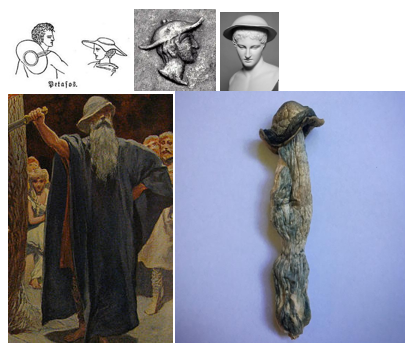
For our own efforts to create a mountain retreat, forest ashram, temple to the Gods, permaculture farm and alchemical laboratory, see our works such as Strategic Permaculture Series, Project Asgard series (forthcoming), where we discuss our exoteric work to obtain heritage herbs, food, breeds from the old world and to propagate ancestral flora and fauna when possible from Icelandic chickens, sheep and goats, to Norwegian Elkhounds, and even sacred cows from India (which are different in fundamental ways from all others in disposition and spiritual potency as understood in agnihotra and Vedic farming practices).
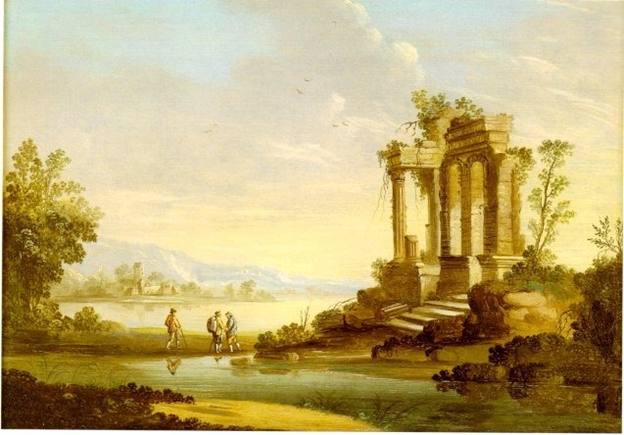
All of the ancient temples are reflections of the higher astral form that is the supreme reality, just as the stars are the Immortals or the long-lived, and only some humans will take their place with the celestial immortals. The earthly temples were attempts of the race of the Gods to recreate these abodes in their exile, of recreating the homeland in a microcosmic way from the yurt to the vast necropolis and Mystery centers to the Tantric architecture of India and Asia. The soul’s journey back home through the seven worlds plus two, the nine realms or spheres are discussed in Eta.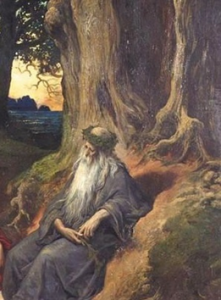
Those who undertake the authentic initiatory alchemy and engage in the Great Work overtime will be exiled from the red dust of the world, for good and bad. There are sacrifices, denied aspects of the normal human experience that one must forgo for higher, deeper modes of Being. The isolation, the training, the solitary ordeals literally remove one from the company of others for extended periods, and the experiences are as such that they can not be communicated to most people if anyone. The knowledge gained can estrange one from the common people the unwashed, even good friends and loved ones as one has to choose between the quest and work over ordinary pleasures and certain social interactions.
One has to live a secret, truly occult private and hermetically sealed personality as the purifications cleanse the heart and spirit. There are those who Remember this Primordial Organic Light and those who will be entranced by the artificial flickering of technology. A dreadful truth is that they are deeply incompatible, irreconcilable worldviews and visions for life’s purpose and meaning. The further one goes on the way, the natural instinct for the wanderer, the recluse and hermit emerge within. Yet, the good Daemons, the Hyperborean ancestors and Bodhisattva continue to incarnate even in the worst conditions to be a lamp in the darkness of this world age.
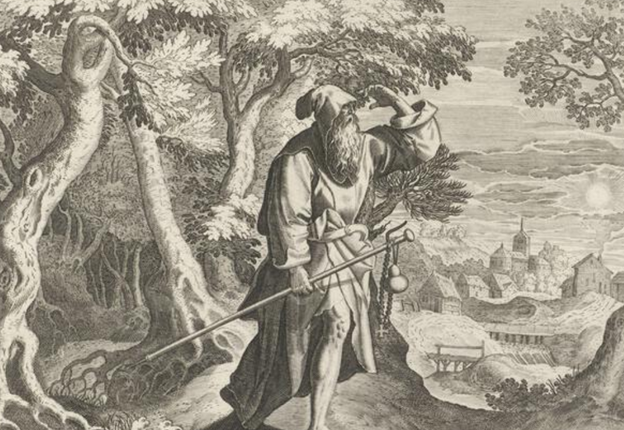
The pilgrim, in this image Christian, (which is a gnostic Mystery cult, with much related topics beyond the scope of this article, also see Sub Rosa) still retains the elixir gourd and staff. The pilgrimage routes in Spain have ancient alchemical associations, such as the mines associated with the alchemical saint The Camino de Santiago (Latin: Peregrinatio Compostellana, “Pilgrimage of Compostela” and Christ is a shepherd or pastoral ‘god’, (the Biblical patriarchs and Muhammad, etc. are all herdsman of some type as such and represent various Traditions, anti- and counter-Traditions, or artificial, faux, counterfeit ‘religions’ as political control through a cult and sorcery.) The Hyperborean Lore of the wounded king, the exile from the company and presence of the Grail is thinly disguised under the compulsory Christian veneer. Though again, as Traditionalists we seek the numinous and find that the Christianity of the Middle Ages was sublime and had been transmuted by the European folk spirit into a heroic, spiritual path that was ‘pagan’ at its core. It is part of our Membership task, like Sir Richard Francis Burton, to adopt the complete form of groups to ‘infiltrate’ or walk among them, such as he entered Mecca in disguise.

Figure taken from “An Artist Resting by the Roadside” Jørgen Roed. The Romantic spirit of Great Longing and Yearning, the restless spirit and sense of confinement that the modern age was presenting birth a spirit of wandering, of wanderlust, of understanding the profound exile of the spirit into hypermaterialism and nihilism, German Sturm und Drang (“storm and stress”). Poets such as Goethe, with the “Wanderer’s Nightsong” (“Der du von dem Himmel bist”), and the music of Schubert, the paintings of Caspar David Friedrich, Julius von Leypold capture this spirit in the emotional storms and exquisite articulation of a mood of the soul the pervades reality.
The Antique To The Northern Wanderer
by Friedrich von Schiller
Thou hast crossed over torrents, and swung through wide-spreading ocean,–
Over the chain of the Alps dizzily bore thee the bridge,
That thou might’st see me from near, and learn to value my beauty,
Which the voice of renown spreads through the wandering world.
And now before me thou standest,–canst touch my altar so holy,–
But art thou nearer to me, or am I nearer to thee?
And so I’m alone. But you, above the clouds,
father of the fatherland! mighty aether! and you
earth and light! you three who rule and love,
100 Eternal gods! I never break ties with you.
from you, I wandered with you too,
you, you joyful I will bring you back more experienced.
me now, up to the top of the Rhine warm mountains filled with wine!
105 That I drink the gods first and the memory of the heroes,
the boatmen, and then yours, you dearest ones! also ‘
parents and friends’! and forget the toil and all the sufferings
and tomorrow and be quickly among the native
from The Wanderer (Hölderlin) – Der Wanderer (Hölderlin)
and likewise in the zen and wandering masters and mountain Hermits,
Like a child of a wealthy home
Wandering among the poor.
Lost on dark paths of ignorance,
We wander through the Six Worlds,
From dark path to dark path–
When shall we be freed from birth and death?
Hakuin’s Song of Zazen
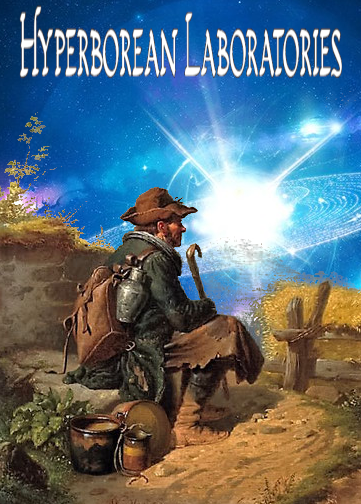
“And the world suddenly appeared to me as such an awfully large place, with I so totally alone in it that I could have cried from the bottom of my heart.” Aus dem Leben eines Taugenichts
“I have paid the penalty for deeds unjust,”—so speaks the soul, when she has finished her pilgrimage,—“and now I am come as a suppliant unto noble Persephone, beseeching her to be gracious, and to send me into the abodes of the pious.”
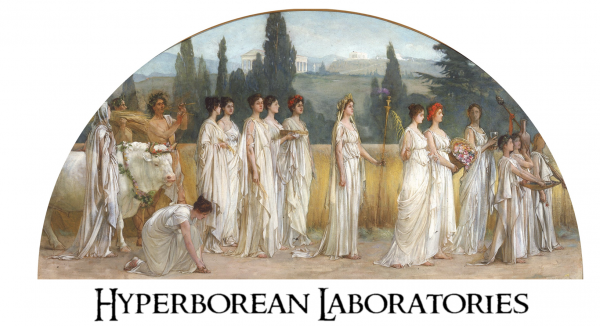
Comments are Disabled